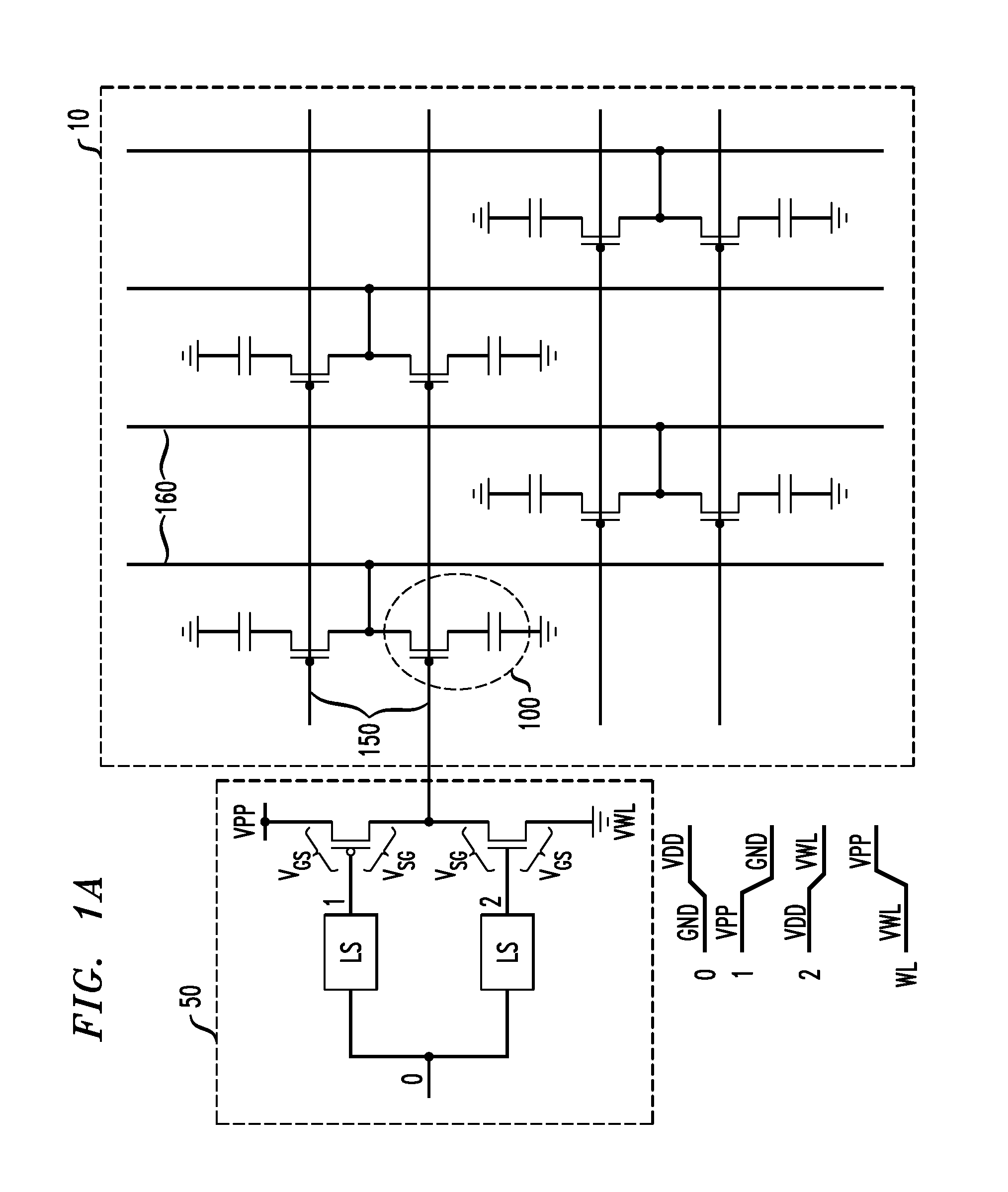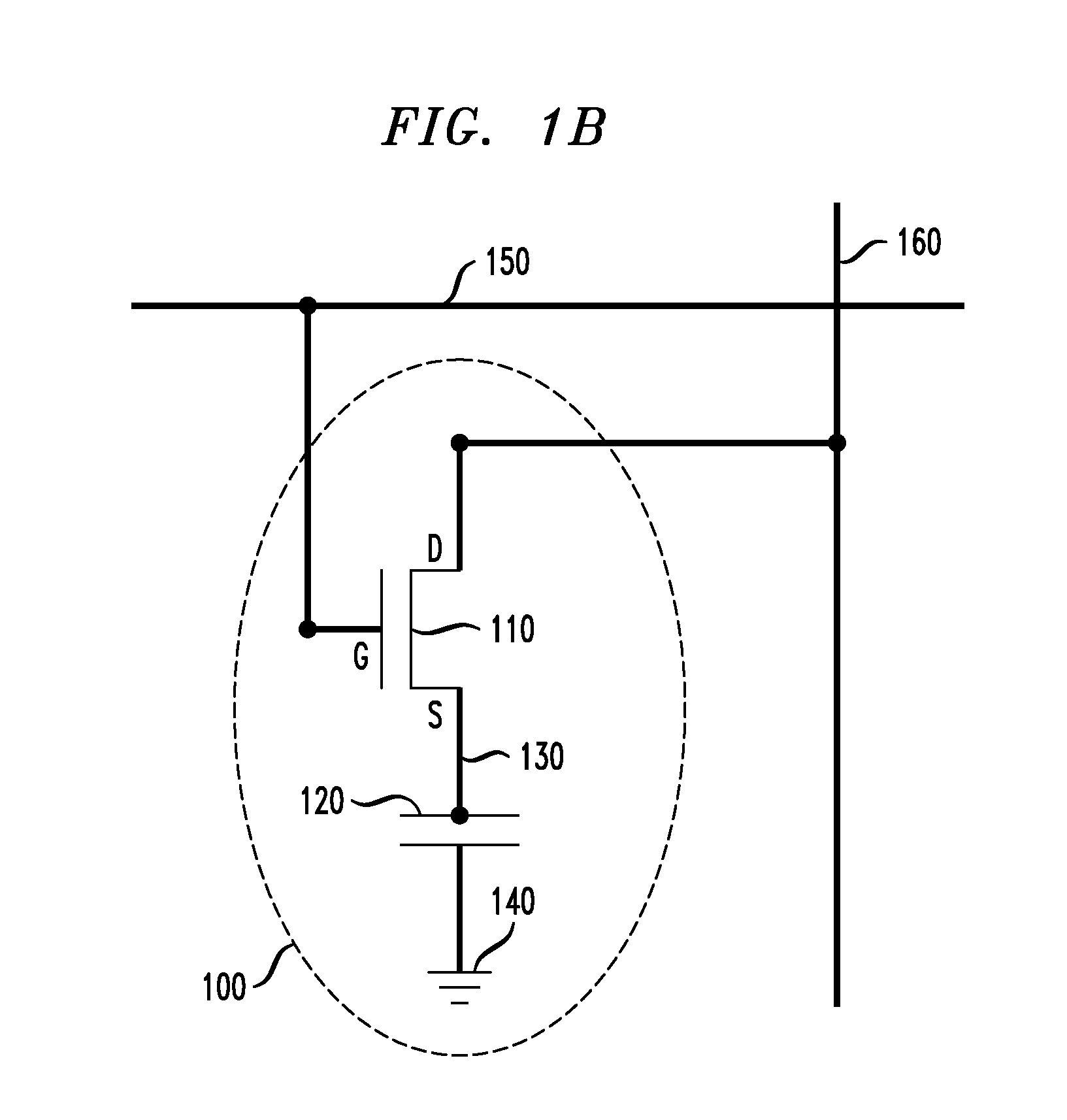High Voltage Word Line Driver
- Summary
- Abstract
- Description
- Claims
- Application Information
AI Technical Summary
Benefits of technology
Problems solved by technology
Method used
Image
Examples
case 3
Regarding case 3, setting VPPLS, VWLLS, VPU and VPD to a common 0.7 V voltage level ensures that a magnitude (i.e., absolute value) of the gate-to-drain and gate-to-source voltages for each of the transistors 211, 212, 221 and 222 does not exceed about one-half of VPP minus one-half of VWL (e.g., VPP / 2−VWL / 2), which is about 1.05 volts in this illustrative embodiment, either when the word line 150 is driven to or maintained at high (e.g., VPP) or low (e.g., VWL) voltage levels. Note, that the gate-to-source and gate-to-drain voltages for each of the transistors 211, 212, 221 and 222 will preferably not exceed VDD (e.g., about 1.1 volts), and thus will not exceed prescribed gate-to-source or gate-to-drain voltage limits for a thin-oxide (i.e., logic) transistor.
For case 3, with two exceptions, the magnitude of the source-to-drain voltage difference for transistors 211, 212, 221 and 222 does not exceed VDD and is at most one-half of VPP minus one-half of WWL (VPP / 2−VWL / 2). The two exc...
case 2
In case 2 of Table 1, with the input 201 equal to about 0 volts, the output of the VWL level shifter 232 driving the drain of pull-down gate clamp transistor 721 will be about 1.1 volts (VDD). Transistor 721 is operative to shift the 1.1 volts received at it drain to about a threshold voltage (VT721) below the voltage of the common gate node 703. By way of example only, node 703 is preferably set to a voltage of about 0.7 volt. A voltage of about 0.7 volt for node 703 is consistent with the pull-up clamp voltage level (VPU) and pull-down clamp voltage level (VPD), which are the voltages that nodes 203 and 204, respectively, are set to in For case 2, with the input 201 equal to about 0 volts, node 703 voltage equal to about 0.7 volt, and a threshold voltage for transistor 721 of about 0.2 volt, the gate voltage of transistor 221 will be about 0.5 volt (i.e., about 0.7V−0.2V). Thus, the magnitude of the gate-to-source voltage and the magnitude of the gate-to-drain voltage for transis...
PUM
 Login to View More
Login to View More Abstract
Description
Claims
Application Information
 Login to View More
Login to View More - R&D
- Intellectual Property
- Life Sciences
- Materials
- Tech Scout
- Unparalleled Data Quality
- Higher Quality Content
- 60% Fewer Hallucinations
Browse by: Latest US Patents, China's latest patents, Technical Efficacy Thesaurus, Application Domain, Technology Topic, Popular Technical Reports.
© 2025 PatSnap. All rights reserved.Legal|Privacy policy|Modern Slavery Act Transparency Statement|Sitemap|About US| Contact US: help@patsnap.com



